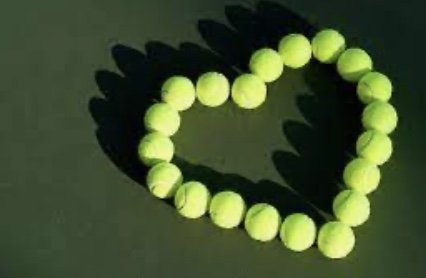Lesson 8 The Practice: Appropriate Response
“Each day I work on getting better, and even the bad days have something good that comes out of them.”
Some say mindfulness is like a bird who has two wings to fly. Similarly, mindfulness has two essential components in order to be complete: awareness and benevolence. Awareness—being fully present in the moment—is often emphasized, especially in the West. But mindfulness doesn’t stop at awareness; it also calls for an appropriate response, one grounded in kindness, compassion, and understanding.
Shifting the Mindset: From Harshness to Benevolence
Growing up in a sports-oriented family, I internalized the “work harder, work longer” mindset: be the first to practice, the last to leave; no pain, no gain. I believed being tough on myself was the surest and quickest path to improvement.
Over time—and with support from neuroscience—I’ve learned that a benevolent response is far more effective for fostering resilience and growth. Resilience thrives when we respond to setbacks or challenges with kindness, self-compassion, and forgiveness. These qualities allow us to stay engaged longer, learn more effectively, and enjoy the process.
In contrast, harsh self-criticism often leads to feeling stuck, frustrated, or burned out. It diminishes our motivation and makes it harder to continue when challenges arise.
“You have to have a real love of your sport to carry you through all the bad times.”
The Science of Mind States and Performance
When we’re stressed, angry, or agitated, we are experiencing a contracted mind state dominated by the fight, flight, or freeze responses of our primitive brain. This state literally narrows our vision and mental clarity, making it harder to perform well and make good decisions.
Conversely, a positive mind state—characterized by joy, gratitude, or compassion—leads to expanded vision (actual increased peripheral vision) and thinking. In this state, we see both the literal and figurative "big picture" more clearly, allowing us to identify appropriate responses to challenges.
“If my mind can conceive it, and my heart can believe it—then I can achieve it.”
“Pain is inevitable, suffering is optional.”
The Power of Resistance
Meditation teacher Shinzen Young offers a formula that highlights how resistance amplifies suffering:
Pain × Resistance = Suffering
Pain is inevitable—it’s part of life. Suffering, however, arises from our resistance: the struggle or refusal to accept our present experience. Resistance shows up in many ways, e.g. aversion, elaboration, perpetuation, or wishing things were different.
On the tennis court, a mistake is painful but manageable. Add resistance—negative self-talk, frustration, or dwelling on the error—and it escalates into suffering, turning a small mistake into a downward spiral effect and resulting in a “bad day.”
Now imagine replacing resistance with acceptance, allowance, or self-compassion. That same mistake becomes a chance to learn and grow, propelling you toward improvement.
As Viktor Frankl reminds us: "Between stimulus and response, there is a space. In that space is our power to choose our response. In our response lies our growth and our freedom."
“Pain and suffering are two completely different experiences. Pain is unavoidable; suffering is self-created.”
On-Court Tip: Finding the Appropriate Response:
The Appropriate Response for Your Inner Game
First and foremost, be compassionate and understanding with yourself—especially on bad days. Your growth as a tennis player doesn’t come solely from the “good days” when everything feels effortless. The biggest opportunities for growth lie in how you mentally respond to challenges and frustrations on your “off days.”
Let benevolence guide your inner dialogue. A kind and constructive response to mistakes will help you recover faster and continue improving. We can forgive ourselves for being human.
The Appropriate Response for On-Court Strategy
As many of you know, I firmly believe that the appropriate response on the tennis court is two fold:
1. Aim higher… 3 FEET OVER THE NET
2. Hit cross court (net lower at the center by 6 inches from net post and 7 feet more court area)
This is the foundation for high-percentage tennis.
Bjorn Borg, a five-time Wimbledon Champion, exemplified this approach. When asked by tennis journalist Bud Collins how he won Wimbledon so many times, Borg’s simply replied: “I hit cross-court.”
Another valuable on-court strategy that simplifies decision-making during play is the principle of “like begets like”:
A high ball (lob) is best returned with another well-placed high ball.
A solid cross-court shot is most effectively met with another cross-court response.
A short-angle shot is best countered with a similarly angled return.
This strategy keeps the play consistent and in your control. By matching your opponent’s shot, you avoid forcing risky or low-percentage changes. Instead, you stay steady, maximize your chances, and dictate play with clarity and composure.
“A good player never misses in the same spot twice in a row.”
Why? Because they problem solve and make the appropriate adjustment. Hit in the net… aim higher on the next ball. Miss long… add more spin. Miss wide… give yourself more margin for error. Tennis is a game of problem solving and creating margin of error for yourself.
“Success is no accident. It is hard work, perseverance, learning, studying, sacrifice and most of all, love of what you are doing or learning to do. ”
“Do you know what my favorite part of the game is? The opportunity to play.”
“Gratitude turns what we have into enough and more. It turns denial into acceptance, chaos into order, and confusion into clarity.”
Success comes not just from skill or effort, but from cultivating a mindset of awareness and benevolence. By responding appropriately—both internally and externally—you’ll not only improve your performance but also rediscover the joy of playing.
Let every challenge, mistake, or setback become an opportunity to grow. This is the practice of mindfulness in tennis—and in life.
“Acknowledging the good that is already in your life is the foundation for abundance.”
Finding a balance between achievement and fulfillment is key to well being
“The point of a goal is the person you are becoming along the way.”




